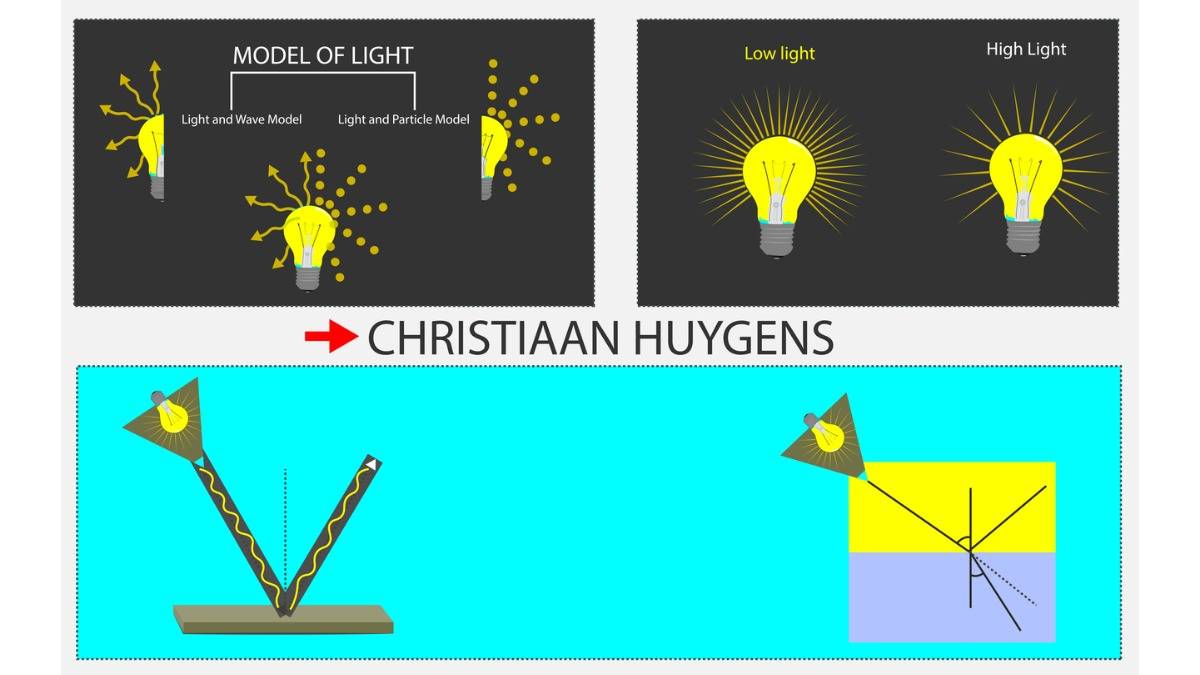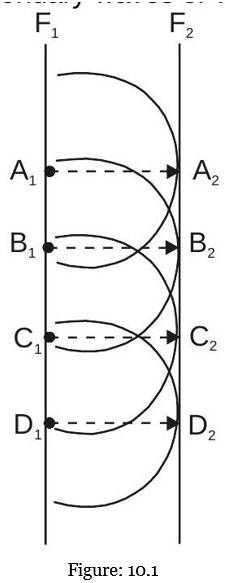
Huygens Principle shows how waves spread and helps you understand different wave phenomena, including reflection and refraction and advanced optical technologies.
It's an important Physics concept, but pretty easy to understand and score in full for your upcoming annuals in CBSE. So, use this guide to practice along with our free NCERT Solutions for Wave Optics. Learn its working principle, covering how waveforms evolve with geometrical expressions and more.
- What is Huygen's Principle?
- NCERT Definition of Huygens Principle
- Working Principle of Huygens Principle
- Real Life Examples of Huygens Principle
What is Huygen's Principle?
Huygens Principle states that every point of a wave acts as a source for other or secondary waves that spread in different directions. This construction of Huygens helps us understand how light (and even sound) waves travel through space, and we often call this Huygens Wave Theory.
Historical Development of Huygens Principle
Christiaan Huygens was a Dutch physicist and astronomer of the seventeenth century. He gave a beautiful geometrical description of wave propagation. We can guess that he must have scientifically observed water waves many times in the canals of his native place in Holland.
He observed that a stick placed in water and oscillated up and down becomes a source of waves. Since the surface of water is two-dimensional, the resulting wavefronts would be circles instead of spheres. At each point on such a circle, the water level moves up and down. Huygens' idea is that we can think of every such oscillating point on a wavefront as a new source of waves.
According to Huygens Principle, what we observe is the result of adding up the waves from all these different sources. These are called secondary waves or wavelets.
Importance of Huygens Principle
- In JEE Mains, the Optics section covers sections of the Huygens Principle. The objective questions could be around determining the nature of wavefronts, how they are formed, etc.
- In Physics, the Huygens Principle is the foundation to learning laws of reflection for light and sound. It also applies to Quantum Field Theory and Electromagnetism.
NCERT Definition of Huygens Principle
In your Wave Optics chapter, you will find the Huygens Principle in section 10.2. It states,
"each point of the wavefront is the source of a secondary disturbance and the wavelets emanating from these points spread out in all directions with the speed of the wave. These wavelets emanating from the wavefront are usually referred to as secondary wavelets and if we draw a common tangent to all these spheres, we obtain the new position of the wavefront at a later time."
Key Terms to Remember with Huygens Principle
- Wavefront - A surface of constant phase in a wave
- Secondary Wavelets - These spread in all directions at the same speed as the original wave
- New Wavefront - This is the tangent surface to the secondary wavefront. It forms the next position of the wavefront.
Working Principle of Huygens Principle
Huygens' principle is illustrated in (Figure : 10.1) in the simple case of a plane wave.
(i) At time
, we have a wavefront
separates those parts of the medium which are undisturbed from those where the wave has already reached.
(ii) Each point on
acts like a new source and sends out a spherical wave. After a time '
' each of these will have radius vt. These spheres are the secondary wavelets.
(iii) After a time
, the disturbance would now have reached all points within the region covered by all these secondary waves. The boundary of this region is the new wavefront
. Notice that
is a surface tangent to all the spheres. It is called the forward envelope of these secondary wavelets.
(iv) The secondary wavelet from the point
on
touches
at
. Draw the line connecting any point
on
to the corresponding point
on
. According to Huygens,
is a ray. It is perpendicular to the wavefronts
and
and has length vt. This implies that rays are perpendicular to wavefronts. Further, the time taken for light to travel between two wavefronts is the same along any ray. In our example, the speed '
' of the wave has been taken to be the same at all points in the medium. In this case, we can say that the distance between two wavefronts is the same measured along any ray.
(v) This geometrical construction can be repeated starting with
to get the next wavefront
a time
later, and so on. This is known as Huygens' construction.
Huygens' construction can be understood physically for waves in a material medium, like the surface of water. Each oscillating particle can set its neighbors into oscillation, and therefore acts as a secondary source. But what if there is no medium, as for light travelling in vacuum? The mathematical theory, which cannot be given here, shows that the same geometrical construction works in this case as well.
Real Life Examples of Huygens Principle
Here are some of the real life examples of Huygens Principle.
When Light Diffracts Through a Narrow Slit
Light bends and passes through a narrow slit. So, based on Huygens Principle, every point in the slit acts as a source of secondary wavelets. This causes wavelets to spread out.
Soap Bubble Colours
Thin soap films show different colours in sunlight. If you look at the Huygens Construction, the explanation is that light waves reflect off different layers of the film, and wavelets interfere.
Physics Wave Optics Exam
Student Forum
Other Class 12th Physics Chapters
- Physics Alternating Current
- Physics Ray Optics and Optical Instruments
- Physics Electromagnetic Induction
- Physics Dual Nature of Radiation and Matter
- Physics Semiconductor Devices
- Physics Wave Optics
- Physics Current Electricity
- Physics Nuclei
- Physics Electrostatic Potential and Capacitance
- Physics Atoms
- Physics Moving Charges and Magnetism
- NCERT Class 12 Notes
- NCERT Class 12 Physics
- Physics Electric Charge and Field
- Physics Electromagnetic Waves
- Physics Magnetism and Matter



